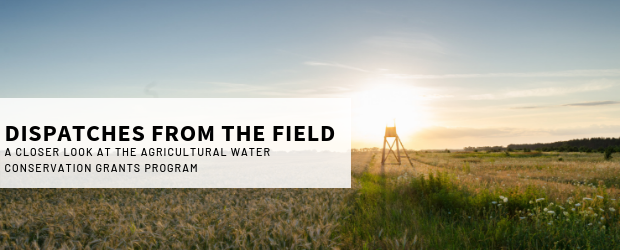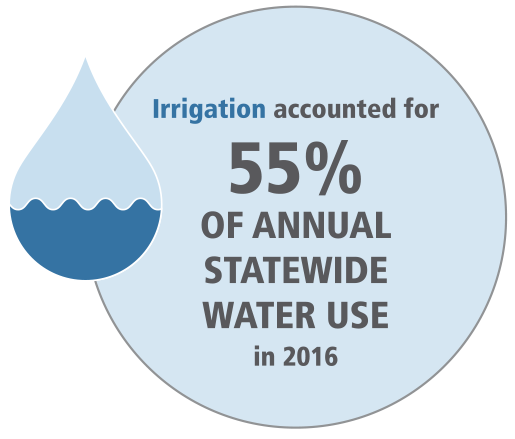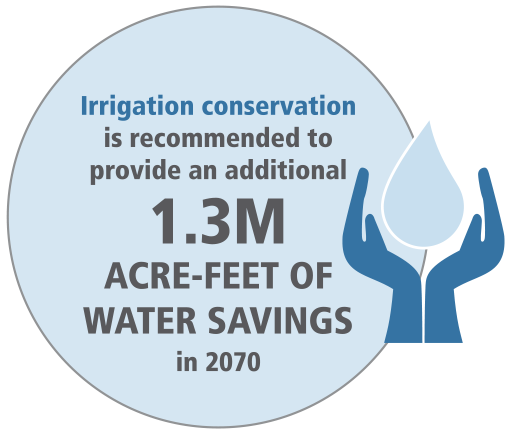
Part I
Conserving Irrigation Water to Sustain the Future of Agriculture in Texas
Irrigation for agricultural production is currently the largest water demand sector in the state, according to the 2017 State Water Plan. Growing food, feed, and fiber in Texas is a tall order that currently requires more water than quenching the thirst of our cities, powering manufacturing, and generating energy in Texas combined. This presents an incredible challenge, and one that regional water planning groups have addressed in part by recommending irrigation conservation strategies.
The 2017 State Water Plan also reports that Texas will need an additional 8.9 million acre-feet of water supplies by 2070, with irrigation accounting for 3.6 million acre-feet of those water needs. In acknowledgement of this potential shortage, regional planning groups recommended a range of strategies which, if implemented, would provide 8.5 million acre-feet of new water supplies, at a cumulative capital cost of $63 billion. Of those new supplies, irrigation conservation is recommended to provide 1.3 million acre-feet. Implementing the irrigation conservation strategies in the plan will generate significant conservation savings, yet cost less than $1.3 billion, or about 2 percent of the total capital costs of all the recommended strategies water supply projects. Furthermore, irrigation conservation is the primary strategy recommended to address the identified irrigation needs in most regions. Irrigation conservation is also the least expensive strategy type, with a statewide average implementation cost of only $147 per acre-foot in 2070.


Implementing irrigation conservation strategies and ensuring the continued viability of Texas agriculture is precisely the goal of the Agricultural Water Conservation Grants Program. Over the past 10 years, the program has provided $12.7 million in 74 funding commitments to political subdivisions and state agencies to support the implementation of irrigation conservation strategies in the state and regional water plans. Funding activities include equipment cost-share, irrigation system improvements, research, education, and demonstrations. Collectively, grant recipients reported more than 496,000 acre-feet of water savings over that same 10-year span. This equates to approximately $26 spent for every acre-foot of water saved, an efficient and effective investment in the future of Texas agriculture.

In the next installment, we’ll explore the ways these grant dollars go further and work even harder, by making possible the use of federal funds.
For more information about the program and current funding opportunities, visit www.twdb.texas.gov or contact AgConservation@twdb.texas.